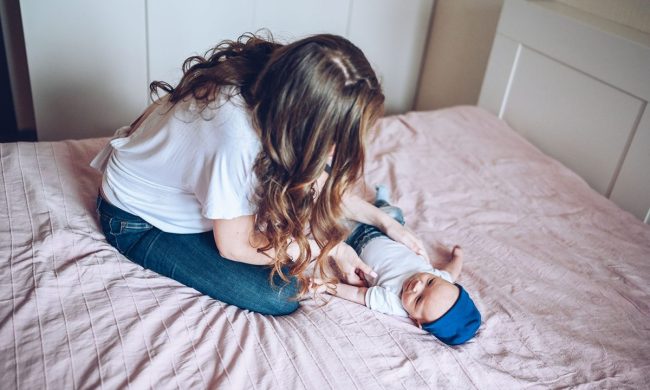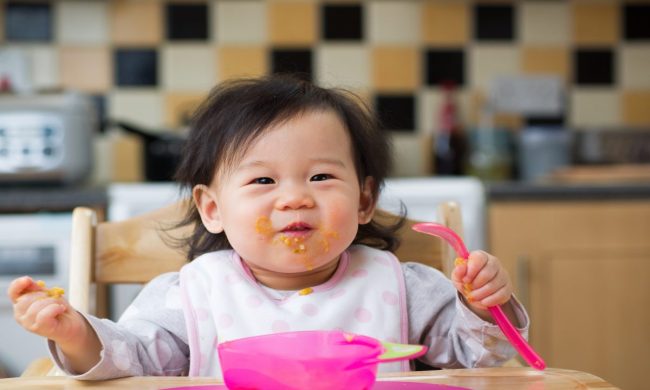Baby clothes may be tiny, but you sure need a lot of them! Between spit-ups, feedings, and diaper blow-outs, not to mention temperature changes, babies need way more outfits than grown-ups. You need a place to store the pajamas, hats, booties, bodysuits, pants, and so on, and you need it all to be easily accessible when you need them.
These baby-clothing storage ideas will help you figure out how to organize baby clothes in a functional and stylish way that saves you precious space.
For those little odds and ends
Inside a top dresser drawer or on top of a changing table caddy, use these organizers for socks, mittens, shoes, headbands, hats, and other accessories. Beyond clothing, these also work for pacifiers, diaper cream, and any other small items that would fill up a messy drawer. Easily access everything you need with this set of 12 organizer fabric boxes.
For out-of-season clothes and the next size up
Store bathing suits in winter and sweaters in summer (as well as all of the older-baby clothing waiting its turn) in under-crib storage. This option has dividers, which you’ll want when you’ve taken the time to sort your 2T hand-me-downs from the 3T and don’t want to put them all in together. Simply slide it under the crib and forget it until you need it, then slide it right out with the handle to access it.
For organizing dresser drawers
You can fill a full-size adult dresser with all the clothing your baby needs (especially if you use any leftover drawer space for bedding and other nonclothing items that need storage), but the drawers are so large that the tiny clothing items will only fill up a fraction of the area per clothing type. Use these adjustable drawer dividers to divide the space so that you have separate areas in each drawer for pants, onesies, and shirts that won’t bleed together and get mixed up.
For labeling dresser drawers
From the outside, a dresser hides the piles of clothing inside, which can be nice for covering clutter. But since you can’t see what’s inside, you may end up opening every drawer until you find what you’re looking for. With baby clothes, there are types of clothing cycled out often (T-shirts in one season and sweaters in the next), so you may forget where one category belongs, especially with the lack of sleep.
Label the outside of your drawers with these cute chalkboard sticky labels that come with an erasable chalk marker so that you can change your labels from 0-3 to 3-6 as they grow. With drawer dividers, most drawers will be doing double or triple duty, so these labels will help you remember where the newborn-size pants are stored.
For hangables
If you have a closet, hang up as much as you can to use that horizontal space off the floor. Finding what you’re looking for among the dozens of hanging items can be tricky, so save your time with these adorable wooden closet dividers that let you know which clothing size is located in what section. With everything separated by size, you’ll be able to find the right item much quicker.
For maximizing closet space
All of the vertical space in your nursery’s closet is prime space and shouldn’t go unused. Use this hanging closet organizer with five drawers, two shelves, and three side pockets to use for clothing as well as diapers, and more. There are dividers within some of the drawers that can be used for socks and other small items. Easily Velcro this to the closet rod, and it will hold up to 30 pounds of baby gear.
For everything in one
If you’re looking for a kid-friendly look, this child dresser can be used in several different ways to store clothing, toys, bedding, books, blankets, and more. There is even space to hang up some items, which is perfect if you don’t have a built-in closet in your nursery. The cute design will fit right in in a baby’s space, and it’s practical for you.
The most important factor to keep in mind when choosing baby-clothes storage is functionality. You need to be able to find what you want when you need it, so you know that taking the time to organize properly will pay off in saving time and frustration trying to dig through a pile of clothes to find the right bodysuit.



